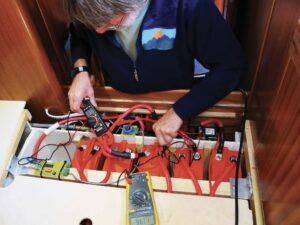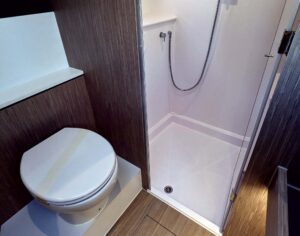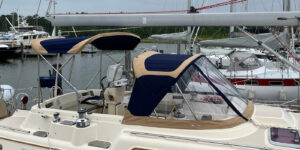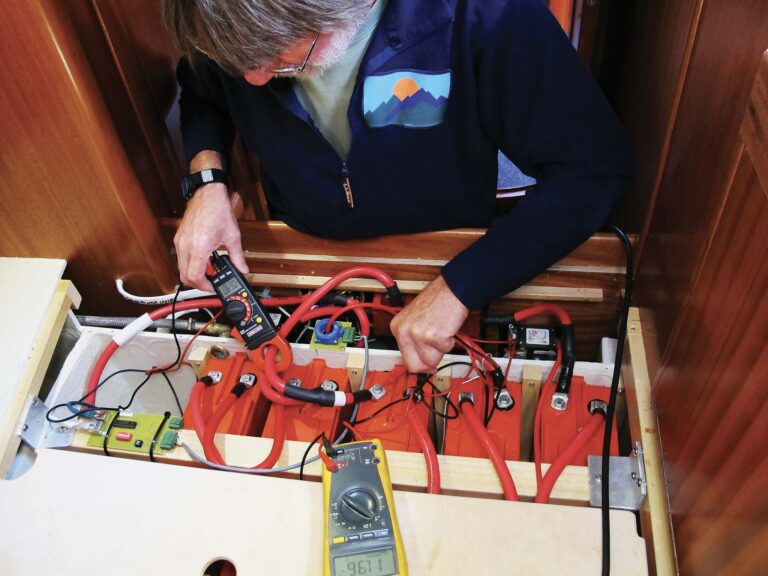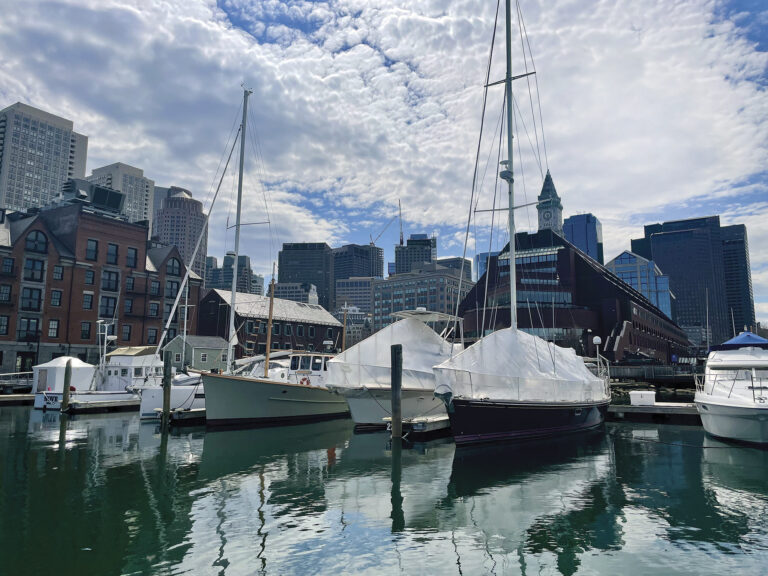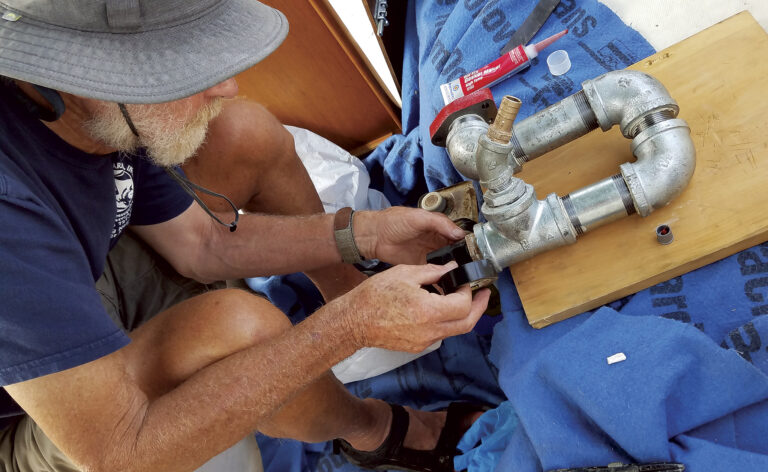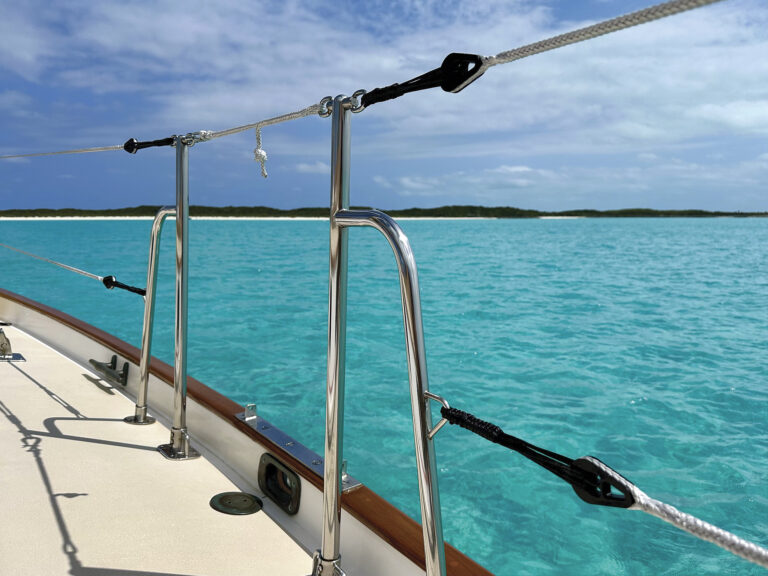It’s never going to be perfect.
It can’t be. The wind and water are constantly changing. We can get close, though, and there’s nothing more fun to drive than a well-trimmed boat.
Proper sail trim can keep any boat flatter and under better control. It can also help you beat that other boat across the bay…and look better in the process. We’re all a little competitive, right? Keep those drinks from spilling and forget turning on the motor to get upwind. Let the sails stiffen up the boat and combat any chop with a kinder motion.
The following is a succinct cruising guide to sail trim, focusing on a sloop rig. Have a cat rig? How about a ketch? The same principles apply.

Upwind: Headsail Jib or Genoa Trim
This will dictate the upwind course. A good helmsman will drive to the telltales on the luff, aiming for them to be flowing aft (or slightly lifted in heavy air). If the windward telltales begin to flutter, she will head down. If the leeward telltales stall, there is room to head up. In puffy conditions, a headsail can be feathered (partially luffed) to keep the boat at proper heel in gusts. Here’s how to dial in that sail:
Headstay: Headstay sag is generally controlled by the backstay. For boats with no backstay, shroud tension is the best influence but challenging to adjust underway. More headstay sag (less backstay pressure), creates a fuller, more powerful shape. For lighter air, keep the backstay looser. As the wind increases, slowly add tension, maxing out by the mid to upper teens.
Halyard: Halyard tension moves the sail’s draft (or point of maximum depth) forward, creating a more rounded entry. Result: a wider steering groove and less heel, ideal in windy and wavy conditions. Lighter air and smoother water require less halyard tension. With the sail sheeted, look for horizontal wrinkles near the luff and add halyard tension until they just disappear. Halyard adjustments with the sheet eased are much easier. In very light air it is all right if wrinkles are just visible; keep in mind the halyard may be over tensioned and need to be eased.
Car: The headsail car position affects the twist of the sail (the difference in angle to the wind between the top and bottom). Sliding the car aft puts more tension on the foot of the sail and less on the leech, opening the top of the sail. Moving the car forward, leech tension increases and foot tension decreases, closing off the top of the sail.

Start with having the fully tensioned sheet run to the clew at about 45 degrees; adjust from there. Test by slowly heading up into the wind with the sail trimmed in. If all the windward telltales break at the same time, the car is well set. If the upper telltales break first, move the car forward. If the lower telltales break first, move the car aft. In a dying breeze, expect to progressively move the car forward.
Sheet: The most important control. Let the boat accelerate before coming in all the way. If boatspeed drops because of wave action or a maneuver, ease the sheet and start over, trimming back in slowly. Tension varies with wind velocity. Light air may mean an overlapping headsail is a foot or so off the spreader. Heavy air may place it within an inch. You are trading power for pointing ability with sheet tension and the sweet spot will vary by boat and condition.
Leech and Foot Cords: Ease these to the point where the sail is fluttering and then tighten them up just enough to stop it.

Upwind: Mainsail
The main drives balance and heel angle. Good main trim is essential for pointing well upwind.
Halyard: Same concept as the headsail. More tension in heavy air and looser in light air. A cunningham (to pull down on the luff) creates the same effect. Look to remove wrinkles in the lower portion of the sail; a hint of them in light air is fine.
Outhaul: Shaping the depth of the main’s lower portion, the outhaul can be eased or tensioned to adjust power. Keep it relatively tighter when sailing upwind for better lift characteristics and add further tension to reduce heel and weather helm. Lighter conditions call for easing to help maintain boat speed, but rarely more than a few inches of clew movement from full tension.
Backstay: Backstay tension depowers the upper portion of the main—that is, if the mast can bend much. Bending the mast stretches the sail between the luff and leech and flattens the sail. Slowly adding backstay pressure as the wind increases works well for both the headsail and main.
Mainsheet: As the mainsheet is tensioned, it first pulls the boom towards center, and then as the sheet becomes vertical, it mostly pulls down. This downward force on the leech controls twist. Sailing upwind in light to moderate air, the boom should be near centerline. Moderate twist, through less sheet tension, increases air flow—this is good for accelerating and light air (all the leech telltales should be flowing). As the boat gets up to speed, sheet in and decrease twist to increase the ability to point higher (the top telltale may show signs of stalling). In higher winds and puffs, the sheet can be eased to luff and depower.
Traveler: The traveler controls the athwartships location of the boom without sacrificing twist. In light air, the traveler is above center, while the boom is on center with plenty of mainsail twist. As wind pressure increases, and the mainsheet is tensioned, and the traveler is eased to leeward. In gusty conditions, the traveler can be played to balance out the helm and heel of the boat.
No traveler? The best bet is to find a middle ground between twist and boom position.
Vang: The vang provides leech tension when the mainsheet is unable to do so (mostly off the wind or in heavy air). This is a helpful tool, albeit still limited, for boats without travelers. For boats with travelers, hand snug in light to medium air and build tension as wind increases so the mainsheet can be quickly and largely eased in puffs while minimizing twist.
Leech Cord: Same as the headsail.

Off the Wind
As the apparent wind angle increases and velocity drops, ease control lines and the backstay to redefine sail shape and add power. In building breeze, these same lines can be used to depower and get the boat back on its feet.
Headsail: Let the telltales drive the sheet and car position. Move the car forward to compensate for an eased sheet. An outboard track is helpful when reaching, but eventually maintaining proper leech tension isn’t possible. Then, focus on the middle telltales and accept that the bottom of the sail will be slightly over-trimmed, and the top will be twisted off.
Mainsail: The mainsheet should be eased until the luff of the sail begins to form a bubble, then sheet back in until it just disappears. Never be afraid of easing to check for over-trimming. The vang will become the leading control for leech tension (twist); tension enough to keep the top batten roughly parallel to the boom, keeping the leech telltales fully flying. Like the headsail, ease the sheet in puffs to accelerate and adapt to the change in apparent wind.
Spinnaker: Asymmetrical spinnakers come in different cuts and weights to handle varying apparent wind angles and velocities. With the appropriate sail flying, ease the sheet until the forward edge of the spinnaker begins to curl. Trim back in to fill the sail and so the first panel occasionally curls. Regularly ease the sheet to check for correct trim. For more stability, the sail can be slightly over trimmed.
The tack line should be eased when heading deeper to increase depth and allow more rotation. Tighten the tack line when reaching. There is a conditions-dependent limit as to how deep asymmetrical spinnakers can be carried (unless you shift to flying off a pole).
With a symmetrical spinnaker, square the pole to be perpendicular to the wind and then trim the sheet as you would an asymmetrical spinnaker. The pole can be dropped lower when reaching and left perpendicular to the mast when running.
Spinnaker lead positions are typically static, but twings can be used to control the sheeting angle and apply more leech tension. These become especially helpful with low-clew sails like a code zero.
Final thoughts
Understanding sail trim lets us shift gears as the wind builds or drops. It breathes exciting new life into any boat. Maneuvers become easier, and reefing becomes just one of many depowering techniques.
Keep in mind, as sails are enjoyed, they slowly lose their shape and ability to perform. If these tricks don’t bring you up to the next level, it may be time to refresh some of that inventory. And, it may just get you out sailing that much more.

January/February 2025


